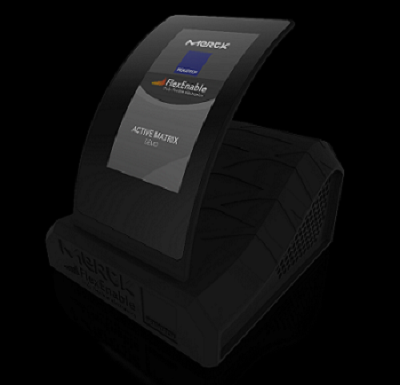
Peratech, a world leader in 3D force-sensing technologies, continues to define the future of HMIs with the announcement of an active-matrix 3D force touch sensor that is integrated with a flexible OLCD, demonstrating how two disruptive technologies can work together to enable new applications.
The solution can be used to create flexible displays that incorporate multi-point force-touch sensing of arbitrary size, from wearable devices to large displays. The surface of the sensing display is flexible, allowing it to curve and conform to the shape of the end application, such as a wristband, dashboard or other work surface.
“This is a significant technological milestone for us,” said Jon Stark, Peratech CEO. “No other flexible active-matrix 3D touch sensor with integrated display is available on the market today. Our collaboration with Merck and FlexEnable has created a new enabling solution for human-machine interfaces to address existing demand.”
One key advantage is that Peratech’s QTC technology can eliminate false touches and open up a wide range of previously unsuccessful force-touch applications. These false touches, commonly associated with capacitive touch sensing, have limited the adoption of touch for safety critical uses including medical, industrial and automotive applications.
The integrated solution is based on FlexEnable’s low-temperature organic thin-film transistor (OTFT) fabrication expertise using Merck lisicon® OTFT material technology together with Merck licristal® liquid crystal materials. All of the circuitry that drives the organic LCD is integrated alongside the 3D touch sensing elements, making display and force touch a single component in terms of design and system integration. This application will be introduced at LOPEC 2018 in Munich, Germany. Visitors can discover and experience this technology at the Merck booth.
The result is a high-resolution force-sensing display. The force sensor provides a raw spatial resolution of 25ppi using 100 by 64 active-matrix sensing elements for the 3D touch sensor. The elements, or sensels, detect both location of touch points and the amount of force applied to each sensel in the contact area, making the theoretical interpolated resolution greater than 10,000 ppi with standard ICs typically used in consumer, automotive, and industrial electronics.
Source: Peratech
Advertisement
Learn more about Electronic Products Magazine





